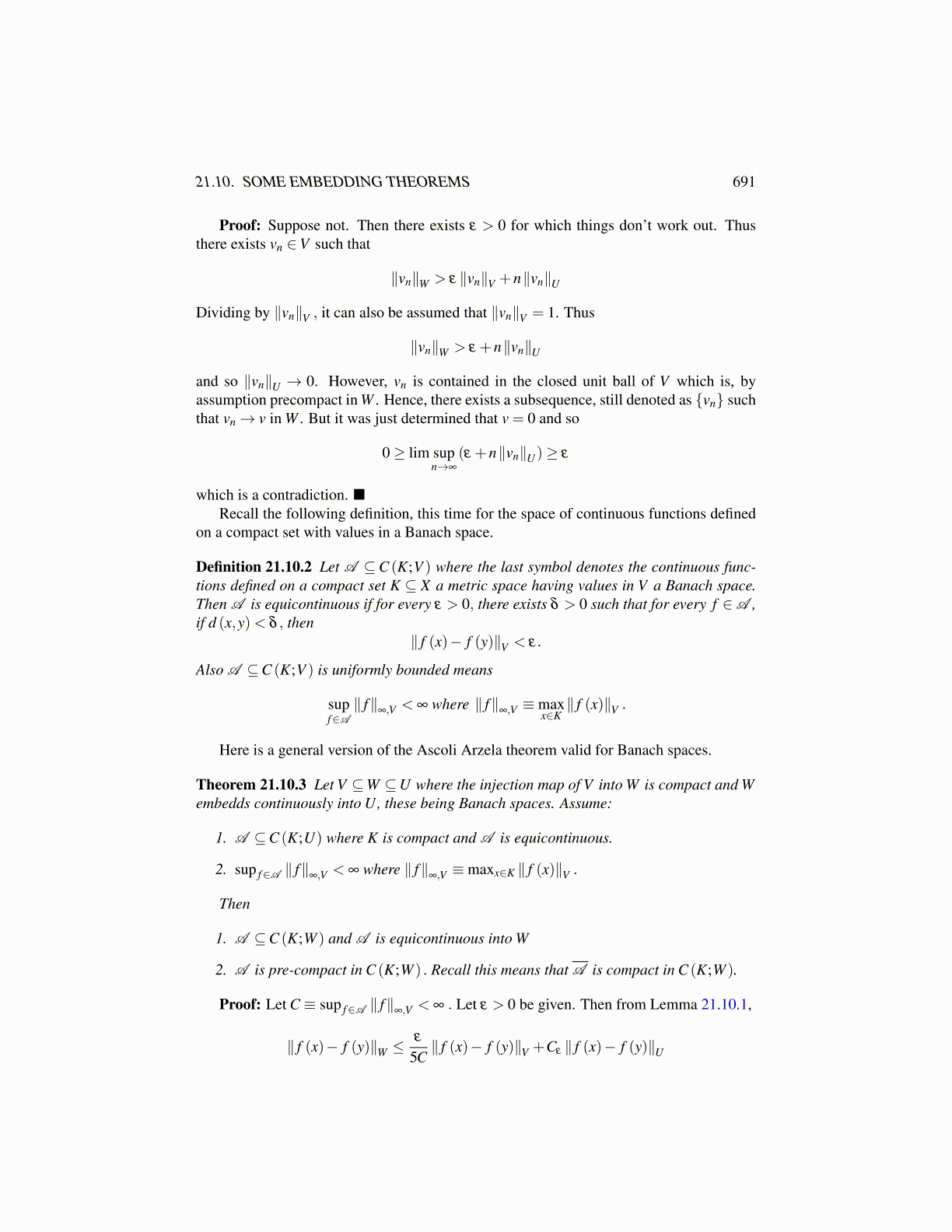
21.10. SOME EMBEDDING THEOREMS 691
Proof: Suppose not. Then there exists ε > 0 for which things don’t work out. Thusthere exists vn ∈V such that
∥vn∥W > ε ∥vn∥V +n∥vn∥U
Dividing by ∥vn∥V , it can also be assumed that ∥vn∥V = 1. Thus
∥vn∥W > ε +n∥vn∥U
and so ∥vn∥U → 0. However, vn is contained in the closed unit ball of V which is, byassumption precompact in W . Hence, there exists a subsequence, still denoted as {vn} suchthat vn→ v in W . But it was just determined that v = 0 and so
0≥ lim supn→∞
(ε +n∥vn∥U )≥ ε
which is a contradiction.Recall the following definition, this time for the space of continuous functions defined
on a compact set with values in a Banach space.
Definition 21.10.2 Let A ⊆C (K;V ) where the last symbol denotes the continuous func-tions defined on a compact set K ⊆ X a metric space having values in V a Banach space.Then A is equicontinuous if for every ε > 0, there exists δ > 0 such that for every f ∈A ,if d (x,y)< δ , then
∥ f (x)− f (y)∥V < ε.
Also A ⊆C (K;V ) is uniformly bounded means
supf∈A∥ f∥
∞,V < ∞ where ∥ f∥∞,V ≡max
x∈K∥ f (x)∥V .
Here is a general version of the Ascoli Arzela theorem valid for Banach spaces.
Theorem 21.10.3 Let V ⊆W ⊆U where the injection map of V into W is compact and Wembedds continuously into U, these being Banach spaces. Assume:
1. A ⊆C (K;U) where K is compact and A is equicontinuous.
2. sup f∈A ∥ f∥∞,V < ∞ where ∥ f∥
∞,V ≡maxx∈K ∥ f (x)∥V .
Then
1. A ⊆C (K;W ) and A is equicontinuous into W
2. A is pre-compact in C (K;W ) . Recall this means that A is compact in C (K;W ).
Proof: Let C ≡ sup f∈A ∥ f∥∞,V < ∞ . Let ε > 0 be given. Then from Lemma 21.10.1,
∥ f (x)− f (y)∥W ≤ε
5C∥ f (x)− f (y)∥V +Cε ∥ f (x)− f (y)∥U